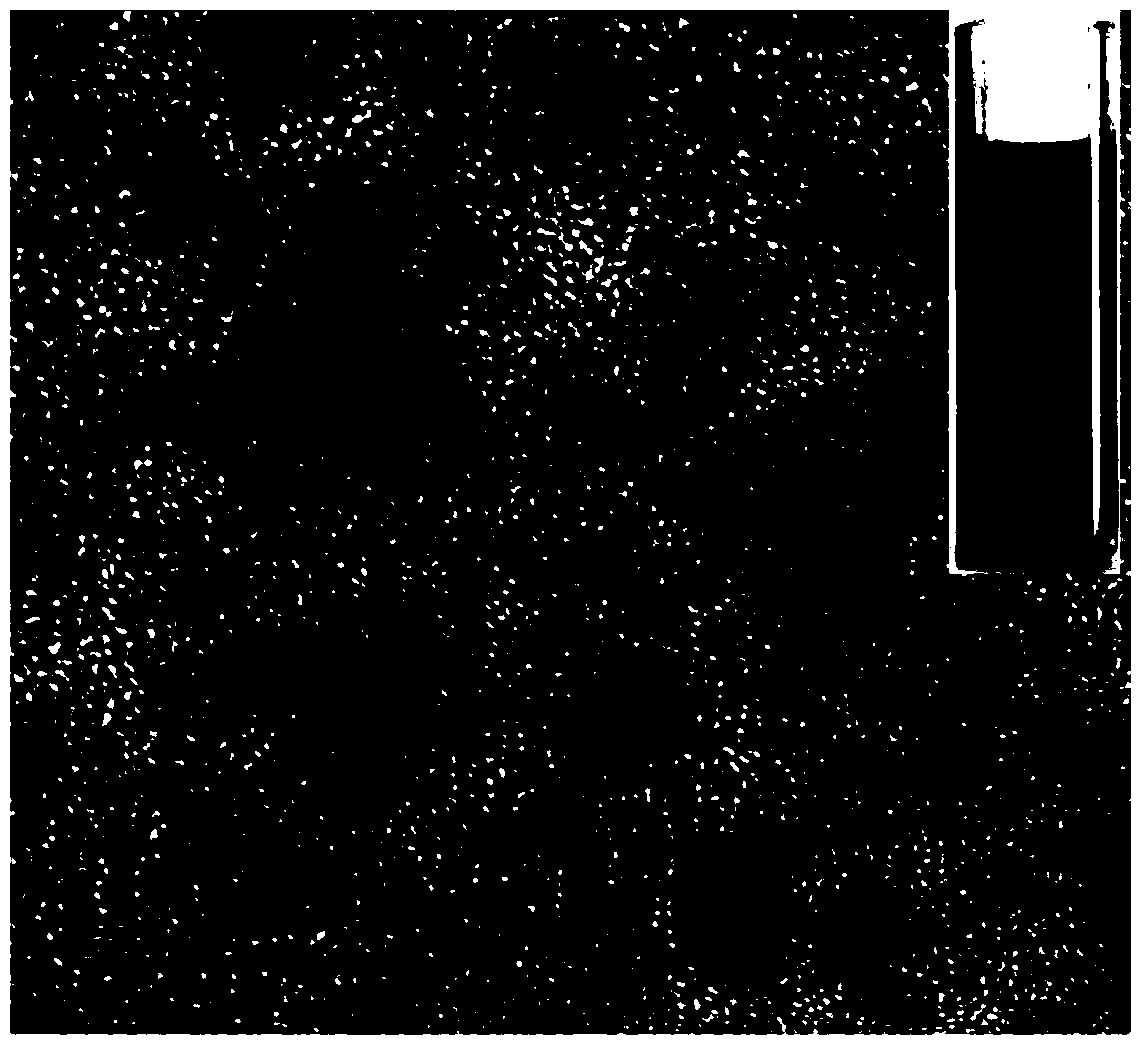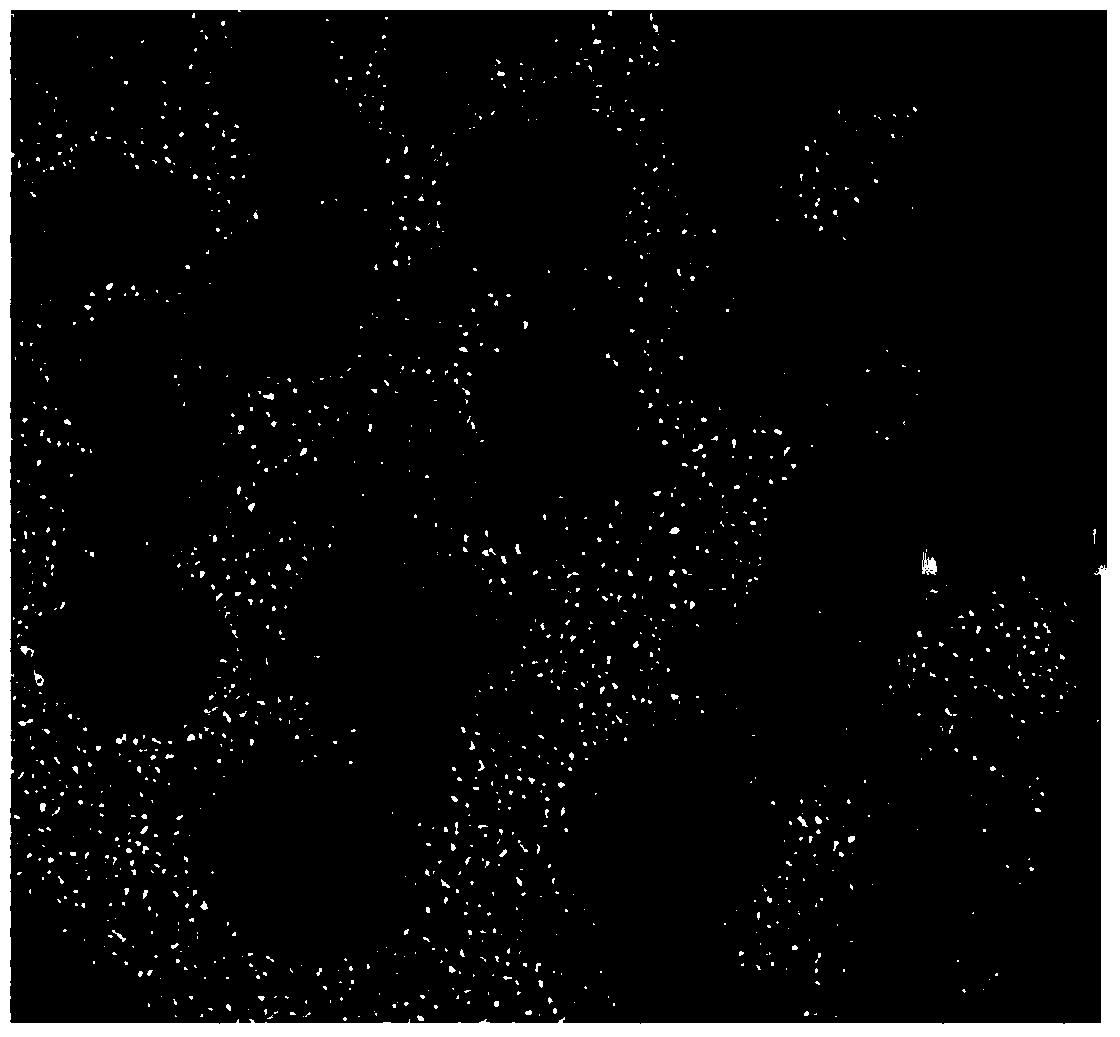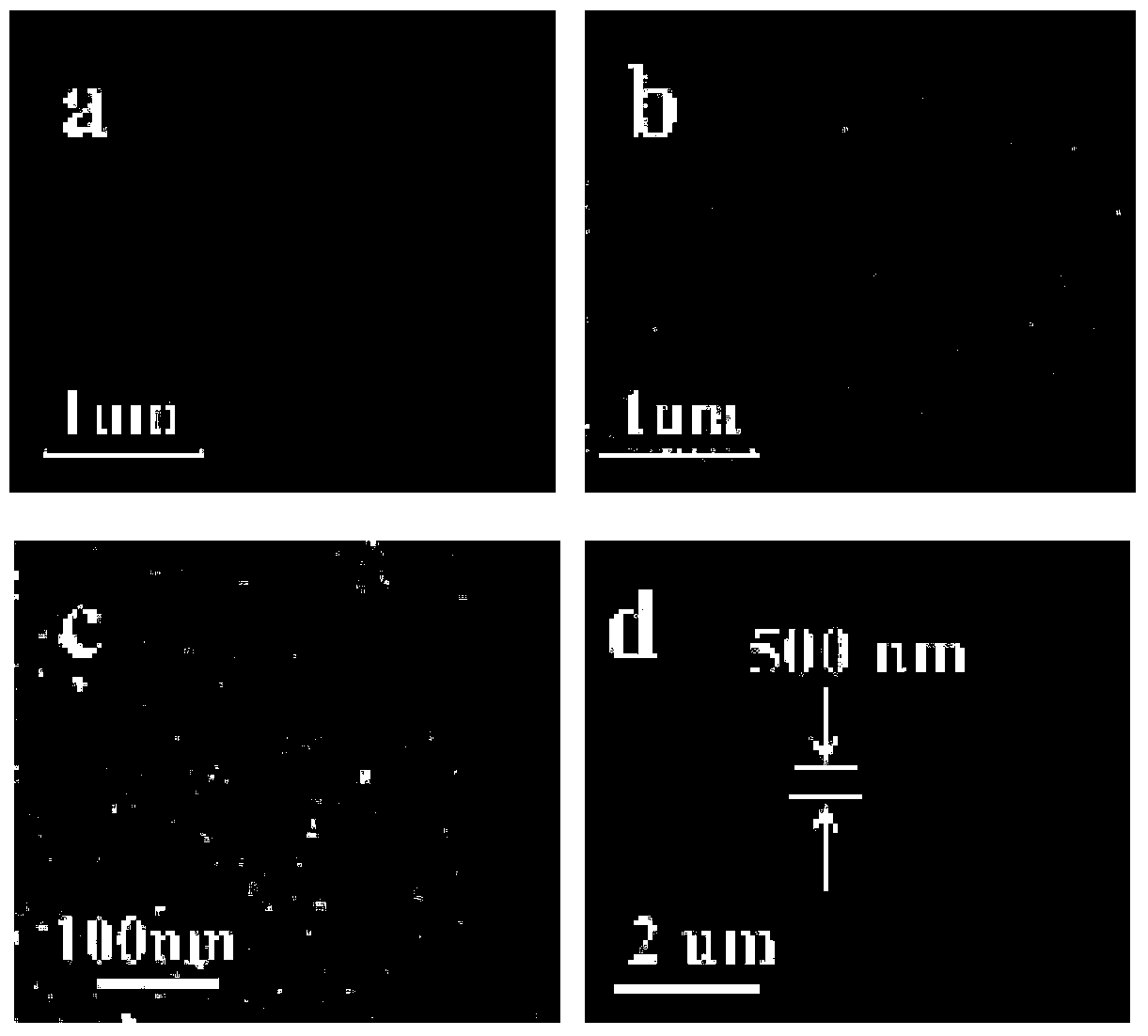Preparation method of transparent, self-cleaning, antibacterial, and wear-resistant coating on polymer surface
A wear-resistant coating and polymer technology, applied in the field of antibacterial, transparent and self-cleaning polymer surface, and the preparation of wear-resistant coatings, can solve the problem of poor wear resistance, high cost, physical deposition process not suitable for large-area processing, etc. problem, to achieve the effect of expanding the scope of application and promoting photoactivity
- Summary
- Abstract
- Description
- Claims
- Application Information
AI Technical Summary
Problems solved by technology
Method used
Image
Examples
Embodiment 1
[0053] 1. Preparation of titanium peroxide solution:
[0054] Take TiCl 4 Dissolve in deionized water to obtain a titanium salt solution with a concentration of 0.2 mol / L, and then adjust the pH of the solution to 9 with 5% ammonia water to obtain a white orthotitanic acid precipitate. Wash with deionized water until there is no chloride ion in the system. Disperse the orthotitanic acid precipitate in 100ml of hydrogen peroxide solution with a mass concentration of 30%. After the precipitate is completely dissolved, add 0.01g of ferric oxide as a catalyst, heat at 50°C for 2h, and remove free oxygen in the system to obtain A yellow-brown transparent titanium peroxide solution, the concentration of the prepared titanium peroxide solution is 0.2mol / L.
[0055] 2. Compounding of nano-silver and titanium peroxide solution:
[0056] Add AgNO to 100ml distilled water 3 The solid is made into a solution of 0.04mol / L, and under the condition of reflux at 100°C, add 250ml of citric...
Embodiment 2
[0062] 1. Preparation of titanium peroxide solution:
[0063] Take TiCl 4 Dissolve in deionized water to obtain a titanium salt solution with a concentration of 0.2 mol / L, and then adjust the pH of the solution to 9 with 5% ammonia water to obtain a white orthotitanic acid precipitate. Wash with deionized water until there is no chloride ion in the system. Disperse the orthotitanic acid precipitate in 100ml of hydrogen peroxide solution with a mass concentration of 30%. After the precipitate is completely dissolved, add 0.01g of ferric oxide as a catalyst, heat at 50°C for 2h, and remove free oxygen in the system to obtain Yellow-brown transparent titanium peroxide solution.
[0064] 2. Compounding of silica / titanium peroxide solution:
[0065] 200mL concentration is the titanium peroxide solution of 0.20mol / L, and adding 200ml particle size is 8-20nm, and the concentration of pH value is 3 is the acidic silicon dioxide aqueous sol of 0.10mol / L, makes the silicon dioxide an...
Embodiment 3
[0071] 1. Preparation of titanium peroxide solution:
[0072] Take TiCl 4 Dissolve in deionized water to obtain a titanium salt solution with a concentration of 0.2 mol / L, and then adjust the pH of the solution to 9 with 5% ammonia water to obtain a white orthotitanic acid precipitate. Wash with deionized water until there is no chloride ion in the system. Disperse the orthotitanic acid precipitate in 100ml of hydrogen peroxide solution with a mass concentration of 30%. After the precipitate is completely dissolved, add 0.01g of ferric oxide as a catalyst, heat at 50°C for 2h, and remove free oxygen in the system to obtain Yellow-brown transparent titanium peroxide solution.
[0073] 2. Compounding of alumina / titanium peroxide solution:
[0074] 200ml of titanium peroxide solution with a concentration of 0.20mol / L was added to 200ml of acidic alumina aqueous sol with a particle size of 8-20nm and a pH value of 3 at a concentration of 0.10mol / L, so that the molar ratio of al...
PUM
| Property | Measurement | Unit |
|---|---|---|
| Water contact angle | aaaaa | aaaaa |
Abstract
Description
Claims
Application Information
 Login to View More
Login to View More - R&D
- Intellectual Property
- Life Sciences
- Materials
- Tech Scout
- Unparalleled Data Quality
- Higher Quality Content
- 60% Fewer Hallucinations
Browse by: Latest US Patents, China's latest patents, Technical Efficacy Thesaurus, Application Domain, Technology Topic, Popular Technical Reports.
© 2025 PatSnap. All rights reserved.Legal|Privacy policy|Modern Slavery Act Transparency Statement|Sitemap|About US| Contact US: help@patsnap.com



